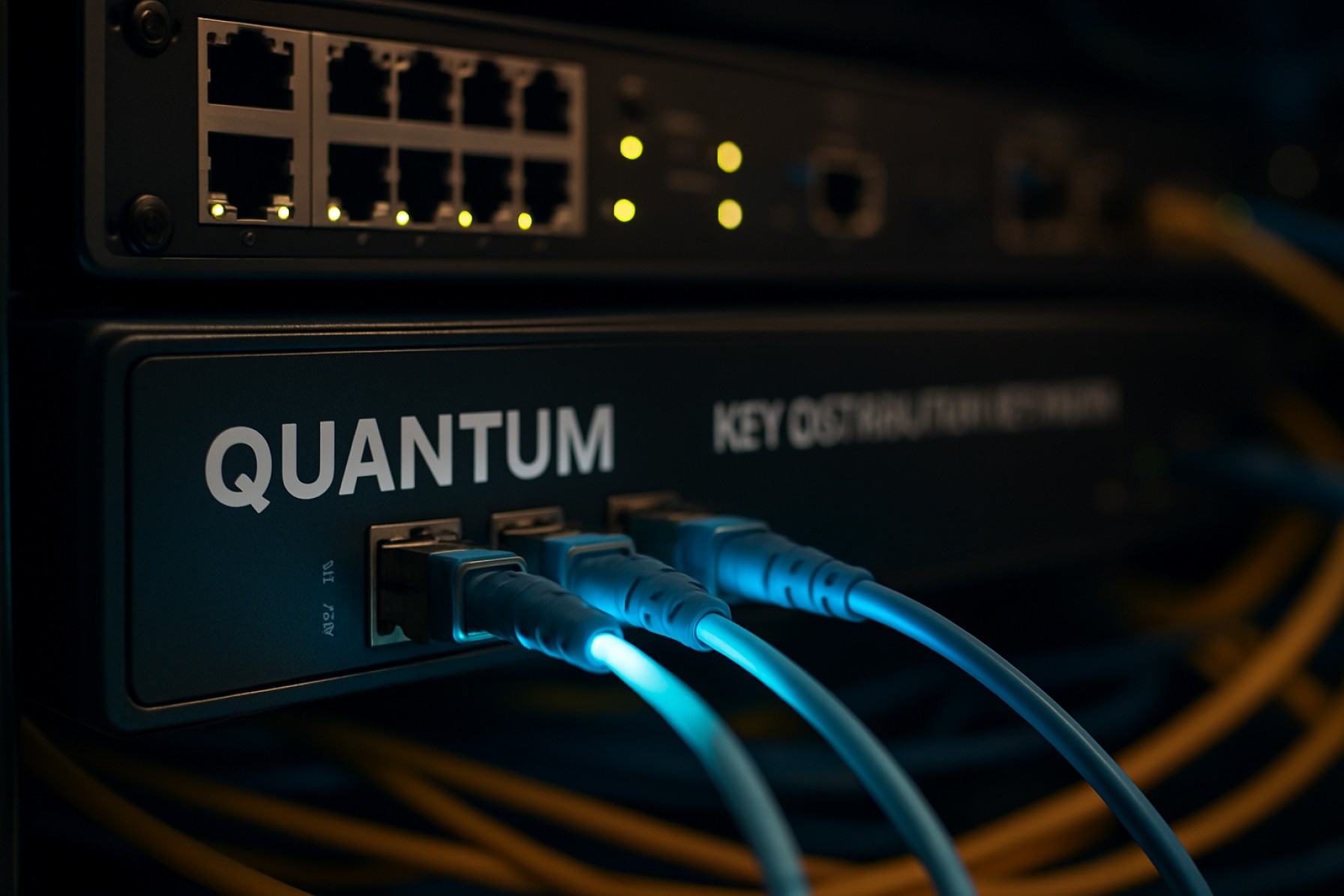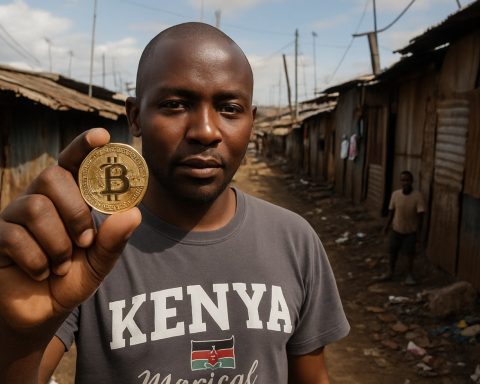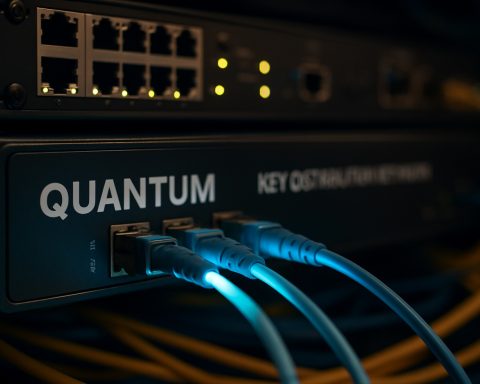Quantum Key Distribution Networks in 2025: How Next-Gen Encryption is Transforming Global Data Security. Explore Market Acceleration, Breakthrough Technologies, and the Road Ahead.
- Executive Summary: The Quantum Leap in Secure Communications
- Market Overview: Size, Segmentation, and 2025–2030 Growth Projections
- Key Drivers: Regulatory Push, Cybersecurity Threats, and Enterprise Adoption
- Technology Landscape: Protocols, Hardware, and Integration Challenges
- Competitive Analysis: Leading Players and Emerging Innovators
- Regional Insights: North America, Europe, Asia-Pacific, and Rest of World
- Market Forecast: CAGR of 40% Through 2025–2030 and Revenue Projections
- Use Cases: Financial Services, Government, Telecom, and Beyond
- Barriers to Adoption: Cost, Scalability, and Standardization
- Future Outlook: Quantum Internet, Interoperability, and Long-Term Opportunities
- Conclusion & Strategic Recommendations
- Sources & References
Executive Summary: The Quantum Leap in Secure Communications
Quantum Key Distribution (QKD) networks are poised to revolutionize secure communications in 2025, offering a fundamentally new approach to cryptographic key exchange that leverages the principles of quantum mechanics. Unlike classical encryption methods, which rely on computational complexity, QKD ensures security through the laws of physics, making it theoretically immune to both current and future computational attacks, including those posed by quantum computers. This executive summary highlights the transformative potential of QKD networks, their current state of deployment, and the strategic implications for governments, enterprises, and critical infrastructure.
In 2025, QKD networks are transitioning from experimental testbeds to operational deployments, particularly in regions prioritizing data sovereignty and critical infrastructure protection. Leading technology providers such as Toshiba Corporation and ID Quantique SA have demonstrated metropolitan-scale QKD networks, while national initiatives in countries like China and the European Union are driving the development of cross-border quantum-secure communication backbones. For example, China's National Laboratory for Quantum Information Sciences has established the world’s longest QKD network, spanning thousands of kilometers and connecting major cities.
The strategic value of QKD networks lies in their ability to future-proof sensitive communications against the advent of quantum computing, which threatens to render classical encryption obsolete. Sectors such as finance, defense, and energy are early adopters, integrating QKD into existing fiber-optic infrastructure to secure data transmission and authentication processes. Furthermore, standardization efforts led by organizations like the European Telecommunications Standards Institute (ETSI) are accelerating interoperability and commercial adoption.
Despite significant progress, challenges remain in scaling QKD networks for global coverage, including the need for trusted nodes, integration with classical networks, and the development of quantum repeaters. However, ongoing research and public-private partnerships are rapidly addressing these barriers. As a result, 2025 marks a pivotal year in which QKD networks move from theoretical promise to practical reality, setting a new benchmark for secure communications in the quantum era.
Market Overview: Size, Segmentation, and 2025–2030 Growth Projections
The global market for Quantum Key Distribution (QKD) networks is poised for significant expansion between 2025 and 2030, driven by escalating concerns over data security and the anticipated advent of quantum computing. QKD networks leverage the principles of quantum mechanics to enable ultra-secure key exchange, making them a critical technology for sectors such as finance, government, defense, and telecommunications.
In 2025, the QKD market is expected to be valued at several hundred million USD, with Asia-Pacific, Europe, and North America as the leading regions. The Asia-Pacific region, particularly China and Japan, has demonstrated early leadership through large-scale pilot deployments and government-backed initiatives. For instance, China Telecom and NTT Communications have both launched metropolitan and intercity QKD networks, while the European Union’s European Quantum Communication Infrastructure (EuroQCI) project is fostering cross-border collaboration and infrastructure development.
Market segmentation is primarily based on application, end-user, and deployment model. Key application segments include secure communications for banking and financial services, government and military, and critical infrastructure. End-users range from large enterprises and government agencies to research institutions. Deployment models are divided into fiber-based terrestrial networks, satellite-based QKD, and hybrid approaches. Fiber-based QKD dominates urban and regional deployments, while satellite QKD is gaining traction for global coverage, as demonstrated by European Space Agency and Indian Space Research Organisation pilot projects.
Growth projections for 2025–2030 indicate a compound annual growth rate (CAGR) exceeding 30%, fueled by increasing regulatory requirements for quantum-safe encryption and the commercialization of QKD hardware and services. Major technology providers such as Toshiba Corporation and ID Quantique SA are scaling up production and forming strategic partnerships with telecom operators to accelerate adoption. The market is also witnessing the emergence of managed QKD services, lowering entry barriers for smaller organizations.
In summary, the QKD network market is transitioning from research and pilot phases to early commercialization, with robust growth expected as quantum threats to classical encryption become more imminent and as global infrastructure investments intensify.
Key Drivers: Regulatory Push, Cybersecurity Threats, and Enterprise Adoption
The rapid evolution of Quantum Key Distribution (QKD) networks in 2025 is being propelled by a confluence of regulatory initiatives, escalating cybersecurity threats, and increasing enterprise adoption. Governments worldwide are recognizing the strategic importance of quantum-safe communications, leading to a surge in regulatory frameworks and funding. For instance, the European Commission has prioritized quantum technologies, including QKD, as part of its Digital Europe Programme, aiming to establish a pan-European quantum communication infrastructure. Similarly, the National Institute of Standards and Technology (NIST) in the United States is actively developing standards for post-quantum cryptography, which complements QKD deployment.
The intensification of cyber threats, particularly those posed by the advent of quantum computing, is another critical driver. Traditional encryption methods are increasingly vulnerable to quantum attacks, prompting organizations to seek quantum-resistant solutions. QKD offers a fundamentally secure method for key exchange, leveraging the principles of quantum mechanics to detect eavesdropping and ensure data integrity. This capability is especially vital for sectors handling sensitive information, such as finance, defense, and critical infrastructure. Companies like Toshiba Corporation and ID Quantique SA are at the forefront, providing commercial QKD systems tailored to these high-security environments.
Enterprise adoption is accelerating as organizations recognize the long-term value of quantum-secure communications. Early adopters are integrating QKD into existing network architectures, often in collaboration with telecom operators and technology providers. For example, Deutsche Telekom AG has launched pilot projects to test QKD in real-world telecom networks, while BT Group plc is exploring QKD for secure data transmission in enterprise and government applications.
In summary, the momentum behind QKD networks in 2025 is shaped by proactive regulatory support, the urgent need to counter quantum-enabled cyber threats, and a growing recognition among enterprises of the necessity for future-proof security solutions. These drivers are collectively fostering a robust ecosystem for the deployment and scaling of QKD technologies worldwide.
Technology Landscape: Protocols, Hardware, and Integration Challenges
Quantum Key Distribution (QKD) networks are at the forefront of secure communications, leveraging quantum mechanics to enable theoretically unbreakable encryption keys. The technology landscape for QKD networks in 2025 is shaped by rapid advancements in protocols, hardware, and the ongoing challenge of integrating quantum systems with classical infrastructure.
Protocols: The most widely implemented QKD protocol remains BB84, which uses the polarization of photons to encode key bits. However, newer protocols such as Measurement-Device-Independent QKD (MDI-QKD) are gaining traction due to their enhanced security against detector side-channel attacks. Continuous-variable QKD (CV-QKD) is also being explored for its compatibility with standard telecom components and potential for higher key rates. Standardization efforts, led by organizations like the International Telecommunication Union and ETSI, are crucial for interoperability and widespread adoption.
Hardware: QKD hardware has evolved from laboratory setups to robust, field-deployable systems. Key components include single-photon sources, highly sensitive single-photon detectors, and quantum random number generators. Companies such as ID Quantique and Toshiba Corporation have commercialized QKD devices capable of operating over metropolitan and intercity fiber networks. Satellite-based QKD, demonstrated by Chinese Academy of Sciences with the Micius satellite, is expanding the reach of QKD beyond terrestrial limitations, enabling global-scale secure key distribution.
Integration Challenges: Integrating QKD with existing classical networks presents significant hurdles. Quantum signals are highly susceptible to loss and noise, limiting transmission distances and requiring trusted nodes or quantum repeaters for long-haul links. Compatibility with conventional network management, routing, and security protocols is an ongoing area of research. Additionally, the high cost and complexity of quantum hardware, as well as the need for specialized maintenance, pose barriers to large-scale deployment. Industry collaborations, such as those fostered by the European Quantum Communication Infrastructure (EuroQCI) initiative, are addressing these challenges by developing hybrid architectures and pilot networks.
In summary, the QKD network technology landscape in 2025 is marked by maturing protocols, increasingly practical hardware, and a focus on overcoming integration challenges to enable secure quantum communications at scale.
Competitive Analysis: Leading Players and Emerging Innovators
The competitive landscape of Quantum Key Distribution (QKD) networks in 2025 is characterized by a dynamic interplay between established technology giants, specialized quantum startups, and collaborative consortia. Leading the field are companies such as Toshiba Corporation, which has demonstrated robust QKD systems and is actively deploying commercial quantum-secure communication networks in Europe and Asia. ID Quantique, based in Switzerland, remains a pioneer, offering end-to-end QKD solutions and partnering with telecom operators to integrate quantum security into existing fiber infrastructure.
In China, China Science and Technology Network (CSTNET) and Chinese Academy of Sciences have spearheaded the development of the world’s largest QKD backbone, the Beijing-Shanghai quantum communication line, setting benchmarks for scale and reliability. Meanwhile, BT Group plc in the UK and Deutsche Telekom AG in Germany are piloting QKD integration with metropolitan and cross-border networks, often in collaboration with research institutions and quantum hardware providers.
Emerging innovators are also shaping the competitive landscape. Startups such as QuantumCTek Co., Ltd. and Qnami are developing novel QKD protocols and miniaturized hardware, aiming to reduce costs and improve scalability. MagiQ Technologies in the US continues to advance QKD modules for government and defense applications, while Quantinuum is exploring hybrid quantum-classical security solutions.
Consortia and public-private partnerships play a pivotal role in standardization and interoperability. The European Telecommunications Standards Institute (ETSI) and International Telecommunication Union (ITU) are actively developing QKD standards, fostering a competitive yet collaborative environment. The European Quantum Communication Infrastructure (EuroQCI) initiative exemplifies cross-border cooperation, aiming to establish a pan-European QKD network by integrating solutions from multiple vendors.
Overall, the QKD network market in 2025 is marked by rapid technological progress, strategic alliances, and a growing emphasis on interoperability, with both established players and agile startups driving innovation and commercial deployment.
Regional Insights: North America, Europe, Asia-Pacific, and Rest of World
Quantum Key Distribution (QKD) networks are gaining momentum globally, with distinct regional dynamics shaping their adoption and deployment. In North America, the United States leads with robust investments in quantum communication infrastructure, driven by national security priorities and public-private partnerships. The U.S. Department of Energy and National Institute of Standards and Technology are spearheading pilot QKD networks, focusing on securing critical infrastructure and financial systems. Canada is also active, with National Research Council Canada supporting research and collaborations with industry players.
In Europe, the region benefits from coordinated policy frameworks and cross-border initiatives. The European Commission is advancing the EuroQCI (European Quantum Communication Infrastructure) project, aiming to interconnect member states with a secure quantum backbone by 2027. Countries like Germany, France, and the Netherlands are piloting metropolitan QKD networks, with support from organizations such as Deutsches Zentrum für Luft- und Raumfahrt (DLR) and Centre National de la Recherche Scientifique (CNRS). The region’s emphasis on data privacy and digital sovereignty is accelerating QKD adoption in government and enterprise sectors.
The Asia-Pacific region is at the forefront of QKD network deployment, led by China’s ambitious national strategy. Chinese Academy of Sciences and University of Science and Technology of China have established the world’s longest QKD backbone, connecting Beijing and Shanghai. Japan and South Korea are also investing in QKD pilots, with NTT Communications Corporation and Korea Electronics Technology Institute driving innovation in metropolitan and intercity networks. The region’s rapid digitalization and focus on cybersecurity are key growth drivers.
In the Rest of World, adoption is nascent but growing. The Council of Scientific and Industrial Research (CSIR) in India and Commonwealth Scientific and Industrial Research Organisation (CSIRO) in Australia are exploring QKD applications for secure government and defense communications. While infrastructure and investment levels vary, international collaborations and technology transfers are expected to accelerate QKD network development in these regions by 2025.
Market Forecast: CAGR of 40% Through 2025–2030 and Revenue Projections
The global market for Quantum Key Distribution (QKD) networks is poised for remarkable expansion, with forecasts indicating a compound annual growth rate (CAGR) of approximately 40% from 2025 through 2030. This rapid growth is driven by escalating concerns over data security in the face of advancing quantum computing capabilities, which threaten to undermine traditional cryptographic methods. As a result, governments, financial institutions, and critical infrastructure operators are increasingly investing in QKD solutions to future-proof their communications.
Revenue projections for the QKD network market reflect this momentum. By 2025, the market is expected to generate revenues in the range of several hundred million USD, with leading industry players such as Toshiba Corporation, ID Quantique SA, and Huawei Technologies Co., Ltd. spearheading commercial deployments and pilot projects. As adoption accelerates, particularly in Asia, Europe, and North America, total market revenues are projected to surpass USD 2–3 billion by 2030.
Key factors underpinning this growth include the increasing integration of QKD with existing fiber-optic infrastructure, the development of satellite-based QKD for long-distance secure communication, and supportive government initiatives. For example, the European Union’s European Quantum Communication Infrastructure (EuroQCI) project and China’s extensive quantum communication networks are catalyzing both public and private sector investment.
Despite the optimistic outlook, the market’s trajectory will depend on overcoming technical challenges such as distance limitations, interoperability, and cost reduction. However, ongoing research and standardization efforts by organizations like the European Telecommunications Standards Institute (ETSI) are expected to facilitate broader adoption and commercial viability.
In summary, the QKD network market is set for exponential growth through 2030, with a projected CAGR of 40% and multi-billion-dollar revenues, as organizations worldwide seek quantum-resilient security solutions to safeguard sensitive data in the quantum era.
Use Cases: Financial Services, Government, Telecom, and Beyond
Quantum Key Distribution (QKD) networks are rapidly gaining traction across multiple sectors due to their promise of unbreakable encryption based on the principles of quantum mechanics. In 2025, the deployment of QKD is moving beyond experimental phases, with real-world use cases emerging in financial services, government, telecom, and other critical infrastructure domains.
In the financial services sector, QKD is being piloted to secure interbank communications and high-value transactions. Financial institutions are particularly vulnerable to cyberattacks, and the advent of quantum computers threatens to render classical encryption obsolete. By integrating QKD, banks can ensure the confidentiality of sensitive data exchanges, such as SWIFT messages and settlement instructions. For example, Deutsche Börse AG has collaborated with telecom providers to test QKD for secure trading data transmission.
Government agencies are also early adopters, leveraging QKD to protect classified communications and critical infrastructure. National security demands the highest level of data protection, and QKD networks are being established between government buildings, defense contractors, and diplomatic missions. For instance, BT Group plc and Toshiba Corporation have partnered to launch quantum-secure networks for public sector clients in the UK.
In the telecommunications industry, QKD is being integrated into existing fiber-optic infrastructure to offer quantum-safe services to enterprise customers. Telecom operators are developing QKD-as-a-service models, enabling clients to lease secure channels for mission-critical applications. China Telecom Corporation Limited has rolled out QKD networks in several cities, supporting secure data transmission for hospitals, banks, and government offices.
Beyond these sectors, QKD is finding applications in energy, healthcare, and cloud computing. Power grid operators are exploring QKD to secure control systems against cyber threats, while hospitals are investigating its use for protecting patient data. As quantum networks expand, interoperability and standardization efforts are being led by organizations such as the European Telecommunications Standards Institute (ETSI), ensuring that QKD can be seamlessly adopted across industries.
Barriers to Adoption: Cost, Scalability, and Standardization
Despite the promise of quantum key distribution (QKD) networks for ultra-secure communications, several significant barriers impede their widespread adoption. Chief among these are high costs, challenges in scalability, and the lack of universally accepted standards.
Cost remains a primary obstacle. QKD systems require specialized hardware, such as single-photon sources and detectors, as well as highly secure and stable optical fibers or free-space links. These components are expensive to manufacture and maintain, especially when compared to conventional cryptographic solutions. The deployment of QKD over long distances often necessitates trusted nodes or quantum repeaters, further increasing infrastructure and operational expenses. As a result, QKD networks are currently limited to niche applications, such as government or financial sector communications, where the value of security justifies the investment. For example, Toshiba Corporation and ID Quantique SA are among the few companies offering commercial QKD solutions, primarily targeting high-security markets.
Scalability is another critical challenge. QKD protocols are inherently point-to-point, making it difficult to extend secure key distribution across large, complex networks. The need for direct quantum channels between users limits the practicality of QKD in metropolitan or national-scale networks. While research into quantum repeaters and entanglement swapping is ongoing, these technologies are not yet mature enough for widespread deployment. Efforts by organizations such as BT Group plc and China Quantum Technologies have demonstrated pilot QKD networks, but these remain limited in scale and require significant investment to expand.
Finally, the lack of standardization hinders interoperability and broader adoption. There is currently no universally accepted set of protocols or performance benchmarks for QKD systems. This fragmentation complicates integration with existing telecommunications infrastructure and raises concerns about long-term compatibility. Industry bodies such as the European Telecommunications Standards Institute (ETSI) and the International Telecommunication Union (ITU) are working to develop standards, but consensus is still evolving.
Overcoming these barriers will require advances in quantum hardware, reductions in cost, and the establishment of robust international standards to enable secure, scalable, and interoperable QKD networks.
Future Outlook: Quantum Internet, Interoperability, and Long-Term Opportunities
The future of Quantum Key Distribution (QKD) networks is poised for significant transformation as research and development accelerate toward a global quantum internet. By 2025, the integration of QKD into broader quantum communication infrastructures is expected to move beyond isolated point-to-point links, focusing on scalable, interoperable networks that can support secure communications across continents. The vision of a quantum internet—where quantum information is transmitted securely and instantaneously—relies on advances in quantum repeaters, satellite-based QKD, and robust network protocols.
Interoperability is a critical challenge and opportunity for QKD networks. As multiple vendors and research institutions deploy QKD systems, ensuring seamless communication between different hardware and protocols becomes essential. Initiatives such as the European Telecommunications Standards Institute (ETSI) and the International Telecommunication Union (ITU) are actively working on standardization efforts to enable interoperability, which will be crucial for the widespread adoption of QKD in both public and private sectors.
Long-term opportunities for QKD networks extend beyond secure government and financial communications. As quantum computing matures, the threat to classical cryptography will increase, making QKD a foundational technology for future-proof security. The deployment of QKD in critical infrastructure, healthcare, and cloud services is anticipated, with pilot projects already underway by organizations such as Toshiba Corporation and China Quantum Technologies. Furthermore, the integration of QKD with classical networks—hybrid architectures—will allow for gradual, cost-effective upgrades to existing infrastructure.
Looking ahead, the realization of a quantum internet will depend on international collaboration, continued investment in quantum technologies, and the development of scalable, cost-effective QKD solutions. The establishment of testbeds and pilot networks by entities like National Institute of Standards and Technology (NIST) and CESNET demonstrates the commitment to advancing QKD research and deployment. As these efforts mature, QKD networks are expected to become a cornerstone of global cybersecurity, enabling secure digital economies and safeguarding sensitive information in the quantum era.
Conclusion & Strategic Recommendations
Quantum Key Distribution (QKD) networks represent a transformative leap in secure communications, leveraging the principles of quantum mechanics to enable theoretically unbreakable encryption. As of 2025, the maturation of QKD technologies has moved from laboratory demonstrations to early-stage commercial deployments, with significant pilot projects underway in Europe, Asia, and North America. These networks are increasingly seen as essential infrastructure for safeguarding sensitive data against both current and future threats, including those posed by quantum computers.
Despite their promise, QKD networks face several challenges. High deployment costs, limited transmission distances, and the need for specialized hardware have constrained widespread adoption. Interoperability between different vendors’ systems and integration with existing classical networks remain technical hurdles. Furthermore, the regulatory landscape is still evolving, with standards under development by organizations such as the International Telecommunication Union and European Telecommunications Standards Institute.
To capitalize on the potential of QKD networks, organizations should consider the following strategic recommendations:
- Invest in Pilot Projects: Early engagement through pilot deployments can help organizations understand the operational requirements and integration challenges of QKD. Collaborating with established technology providers such as Toshiba Corporation and ID Quantique SA can accelerate learning and reduce risk.
- Monitor Standards Development: Active participation in standards bodies like the ITU and ETSI will ensure that deployed solutions remain interoperable and compliant with emerging global frameworks.
- Plan for Hybrid Security Architectures: Given the current limitations of QKD, organizations should adopt hybrid approaches that combine quantum and classical cryptography, as recommended by the National Institute of Standards and Technology.
- Engage with National Initiatives: Many governments are funding QKD infrastructure as part of broader cybersecurity strategies. Participation in initiatives led by entities such as the European Quantum Communication Infrastructure can provide access to resources and expertise.
In conclusion, while QKD networks are not yet a universal solution, their strategic importance is growing rapidly. Proactive investment, standards engagement, and hybrid security planning will position organizations to benefit from the next generation of secure communications.
Sources & References
- Toshiba Corporation
- ID Quantique SA
- European Quantum Communication Infrastructure (EuroQCI)
- European Space Agency
- Indian Space Research Organisation
- European Commission
- National Institute of Standards and Technology (NIST)
- BT Group plc
- International Telecommunication Union
- Chinese Academy of Sciences
- China Science and Technology Network (CSTNET)
- Qnami
- MagiQ Technologies
- Quantinuum
- National Research Council Canada
- Deutsches Zentrum für Luft- und Raumfahrt (DLR)
- Centre National de la Recherche Scientifique (CNRS)
- Chinese Academy of Sciences
- University of Science and Technology of China
- Korea Electronics Technology Institute
- Council of Scientific and Industrial Research (CSIR)
- Commonwealth Scientific and Industrial Research Organisation (CSIRO)
- Huawei Technologies Co., Ltd.
- Deutsche Börse AG
- CESNET











